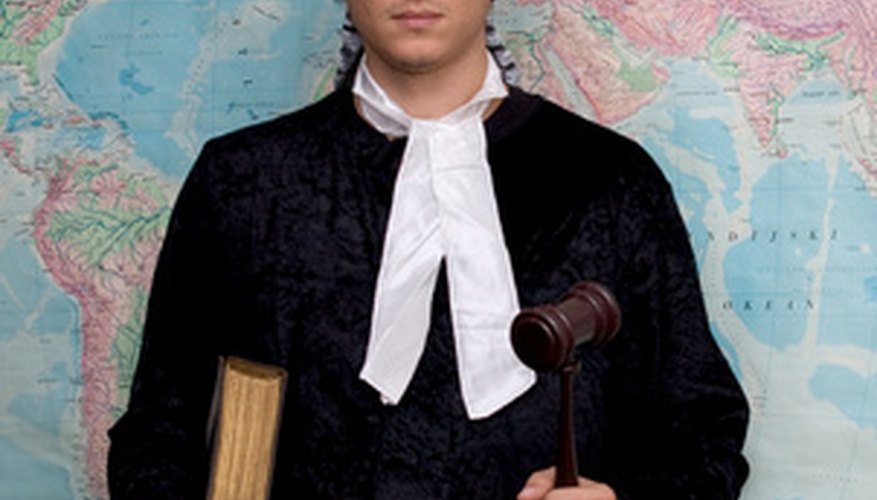Barristers in the English legal system wear wigs called tie wigs that cover half of the head. On special occasions, senior barristers may wear long, shoulder-length wigs called spaniel wigs. Barrister wigs, made from horsehair, are seldom washed or cleaned. Most barristers will own only one wig in their lifetime, as a discoloured and worn wig signifies a long career.
Honour
Wigs help identify barristers as office holders in authority with high honour and importance. The appearance of a wig signifies the seriousness and dignity of court proceedings and a respect of the law.
Status
Wearing a wig reminds barristers of their serious role as legal professionals while in court proceedings. Wigs also differentiate the more highly educated barristers from solicitors. While barristers try cases in higher courts, solicitors prepare the cases for banisters and advise clients.
- Barristers in the English legal system wear wigs called tie wigs that cover half of the head.
- Wearing a wig reminds barristers of their serious role as legal professionals while in court proceedings.
Anonymity
Wigs help hide the age and gender of barristers and offer security through anonymity. When trying criminal cases where there is a possibility of vengeful clients, wigs help conceal the barristers' identities.
